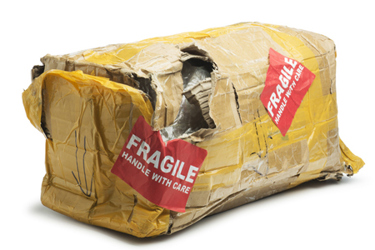What Really Happens When A Cell Therapy Supply Chain Fails?
By Michael Mehler

It was late Friday night on the Fourth of July holiday weekend when I received a call from the CDMO responsible for manufacturing T cells for patients enrolled in our Phase 1 clinical trial.
“We have a problem,” he said. “Someone cleaned a freezer last night and forgot to plug it back in. All of the products in that freezer were thawed and destroyed — they can’t be used.”
“I’m confused. What does it mean for the patients waiting for infusion?” I asked.
“You will have to re-apherese the patients and we will have to manufacture new cells,” he said.
“But one of those patients already started lymphodepletion and is scheduled to be infused next week. The hospital is expecting cells on Monday. I don’t think we can wait six weeks for another manufacture. I think that patient is aggressively progressing — it’s unlikely that she has that kind of time,” I said.
I immediately notified the company physician who confirmed that this patient would likely not be able to undergo another apheresis, let alone live long enough to receive an infusion six weeks later. It was in this moment we realized how truly time critical and logistically sensitive the cell therapy journey was. These therapies are a patient’s lifeline, and one hiccup can impact everything.
In the fast-paced world of cell therapies, building a resilient supply chain is crucial to ensure the timely and safe delivery of therapies to patients. As we all know, one misstep in the product and patient journey can have life-altering implications for patients while devastating a company’s reputation. We often read about these implications and challenges but rarely hear about the real-world scenarios that have impacted patients and companies. Every disaster is an opportunity.
Let’s look at a few of these experiences, their impact, and lessons learned as we collectively and actively improve operations in the cell therapy landscape. As the market attempts to stand back up and dust itself off, it’s more important than ever for cell therapy companies large and small to do more than just proclaim they are “best-in-class.”
The Unplugged Freezer
The situation
In the early days of cell therapy, a young and reputable pre-IPO cell therapy biotech with an efficacious autologous product treating patients with a rare oncology disease in a Phase 1 clinical trial setting experienced a disastrous outcome that ultimately cost a patient their life when a CDMO employee forgot to plug a freezer in after a routine cleaning procedure, destroying all products.
The failure
During a routine cleaning procedure at the CDMO, an employee unplugged a freezer and forgot to plug it back in. While unplugged, frozen products were compromised and subsequently destroyed, leaving the company and patients to rush to attempt a repeat apheresis and manufacture new cells before the patients’ diseases worsened.
The impact
- All manufactured product in the freezer was destroyed, requiring a new manufacture.
- A patient who was at-risk lymphodepleted progressed and died while waiting for the second manufacture.
- Because backup cells were not collected as per the apheresis SOP, a repeat apheresis was required.
- The sponsor company experienced a significant drop in enrollment as customers lost trust in its ability to deliver product safely and on time.
- Health care providers sought other treatment options for their patients, regardless of product efficacy.
- The biotech company’s reputation became viewed as reckless throughout the industry, taking years to rebuild trust and reputation.
- Commercial plans for launch were delayed as a result of the diminished enrollment.
- FDA regulatory implications and audits assessing processes would follow this incident.
The lesson
- While at risk-lymphodepletion was common practice for rapidly progressing patients, this experience proved to create more risk than reward.
- All hospitals are required to have cells on-site and inspected prior to starting any lymphodepletion regimens (although it is not an industry standard).
- When possible, all patients should have backup starting material collected during apheresis and stored with the CDMO.
- The CDMO installed electronic alerts when a freezer was unplugged for suspicious timeframes.
Over time, the CDMO installed alert notifications for unlatched doors or rising temperatures and implemented a regular performance review routine for older freezer units.
The Damaged Product
The situation
A cell therapy biotech company with an autologous product treating oncology patients in a Phase 2 clinical trial setting experienced a detrimental outcome that delayed a patient’s treatment when the product bag was found to be damaged immediately prior to infusion.
Although the patient had undergone the preparative lymphodepletion regimen, the infusion was abandoned. The patient was required to undergo a second apheresis procedure and wait an additional 12 weeks for treatment.
The failure
Immediately before infusion, the qualified research nurse at the major academic hospital noticed the bag of manufactured T cells seemed to be excessively wet. Upon inspection, it was determined that the bag had a small fracture in the corner, creating a small but consistent leak.
Without a formal SOP in place with the growing biotech, the nurse called the company for guidance. It was determined that the cells could not be infused due to unknown cell dose and sterility. It was never determined where in the product journey the bag was damaged, although it was suspected to have occurred during the transfer from cryoshipper to water bath.
The impact
- Because there was a significant delay in treatment, the patient’s disease worsened, potentially decreasing the likelihood of clinical response.
- The patient’s treatment was delayed by 12 weeks due to the washout period and repeat apheresis required in preparation of a new manufacture and treatment plan.
- The patient had already undergone lymphodepletion and experienced serious adverse events (SAEs). As a result, there were significant FDA regulatory implications and subsequent audits assessing the safety of the processes.
The lesson
- The company immediately set in place formal SOP guidance for the inspection of cells and processes for what to do in the event of damaged product.
- A mock run-through was implemented during site onboarding to test all processes and ensure all personnel were properly trained on inspection and handling procedures.
- Final product was altered to be stored in multiple bags rather than just one. This way, if one of the two bags is damaged, there is a second bag available, so the patient would still be able to receive treatment.
How Market Factors Set The Stage For Failure
What happened?
Following record-setting fundraising and IPO launches over the last few years, the cell and gene therapy industry is now experiencing a natural correction and has returned to pre-pandemic numbers. In the face of the market downturn, companies are forced to prioritize clinically and financially promising programs while pausing the less encouraging ones.
Programs serving smaller patient populations are often viewed as less attractive from a commercial standpoint and are now being sidelined, regardless of the likelihood of success. Moving forward, companies and customers are forced to act with purpose, employing improved strategies and enhanced operations to implement high-quality cell and gene therapy products within efficient and reliable operating models.
How did we get here?
The current environment has been shaped by a combination of industry-dependent factors, including manufacturing, supply chain, and operational inefficacies, talent gaps, imprecise forecasting, as well as macroeconomic factors involving investments from inexperienced players and overall economic decline. With what seemed like an endless flow of capital and a series of product successes in 2020 and 2021, an irrational excitement mesmerized investors.
New players flooded the field, and companies were quickly spun out and scaled prematurely. During this boom companies were making decisions that should have taken more time and consideration, and that allowed for quick and unchecked progress for countless programs across the industry.
How do we fix it?
As the field progresses, the industry needs to keep pace with its development in all aspects of manufacturing, distribution, logistics, and administration. We have groundbreaking science that can change the lives of patients, but if we can’t get it to the patients, the science is lost. Thanks to a plethora of emerging technologies and large infusions of capital from investors new to the industry, it became difficult to identify “best-in-class,” a catchy buzzword tossed around the industry when a new player entered the market or broached commercial planning.
More than one biopharma touted itself as “best-in-class” only to be plagued by failed manufacturing runs, unacceptable wait times for patients, and a communication abyss for hospitals. The reality is, and has been for several years, that most cell therapy companies and programs have been falling well short of best-in-class when it comes to dependable and seamless cell therapy product operations. With limited manufacturing slots, unreliable suppliers, costly aborted runs, lack of customer trust, and deficient communication plans, the market is overdue for a financial and operational correction. As is true in all product development, failure creates growth, and this is the time for the industry to implement improved processes and procedures across the patient and product journey.
Is it getting better?
While the market experienced sharp declines in investment dollars as well as clinical trials over the last two years, data suggests the sector is on the road to recovery and the first few offerings of 2024 signify the proof, and while we are certainly encouraged to see the uptick, this is not the most critical component.
As more clinical data is published and mergers and acquisitions are occurring, we are now seeing who is emerging victorious in this sector. Industry experts should be ensuring the quality of the cell therapy landscape is improving and need to keep pace with its development in all aspects of manufacturing, distribution, logistics, and administration. The key to seeing cell and gene therapies reach their full potential will be the advancement of operations.
About The Author:
 Michael Mehler has spent over 15 years in the cell and gene therapy industry helping organizations operationalize products, build global site footprints, develop supply chain strategies, lead patient and customer engagement, and prepare for commercialization and product launch. He has worked for startups and global pharmaceutical companies, including Adaptimmune, Immatics, and GSK. He earned a B.A. in psychology and sociology from Fort Lewis College in Colorado and an M.A. in experimental research from San Jose State University in California.
Michael Mehler has spent over 15 years in the cell and gene therapy industry helping organizations operationalize products, build global site footprints, develop supply chain strategies, lead patient and customer engagement, and prepare for commercialization and product launch. He has worked for startups and global pharmaceutical companies, including Adaptimmune, Immatics, and GSK. He earned a B.A. in psychology and sociology from Fort Lewis College in Colorado and an M.A. in experimental research from San Jose State University in California.
